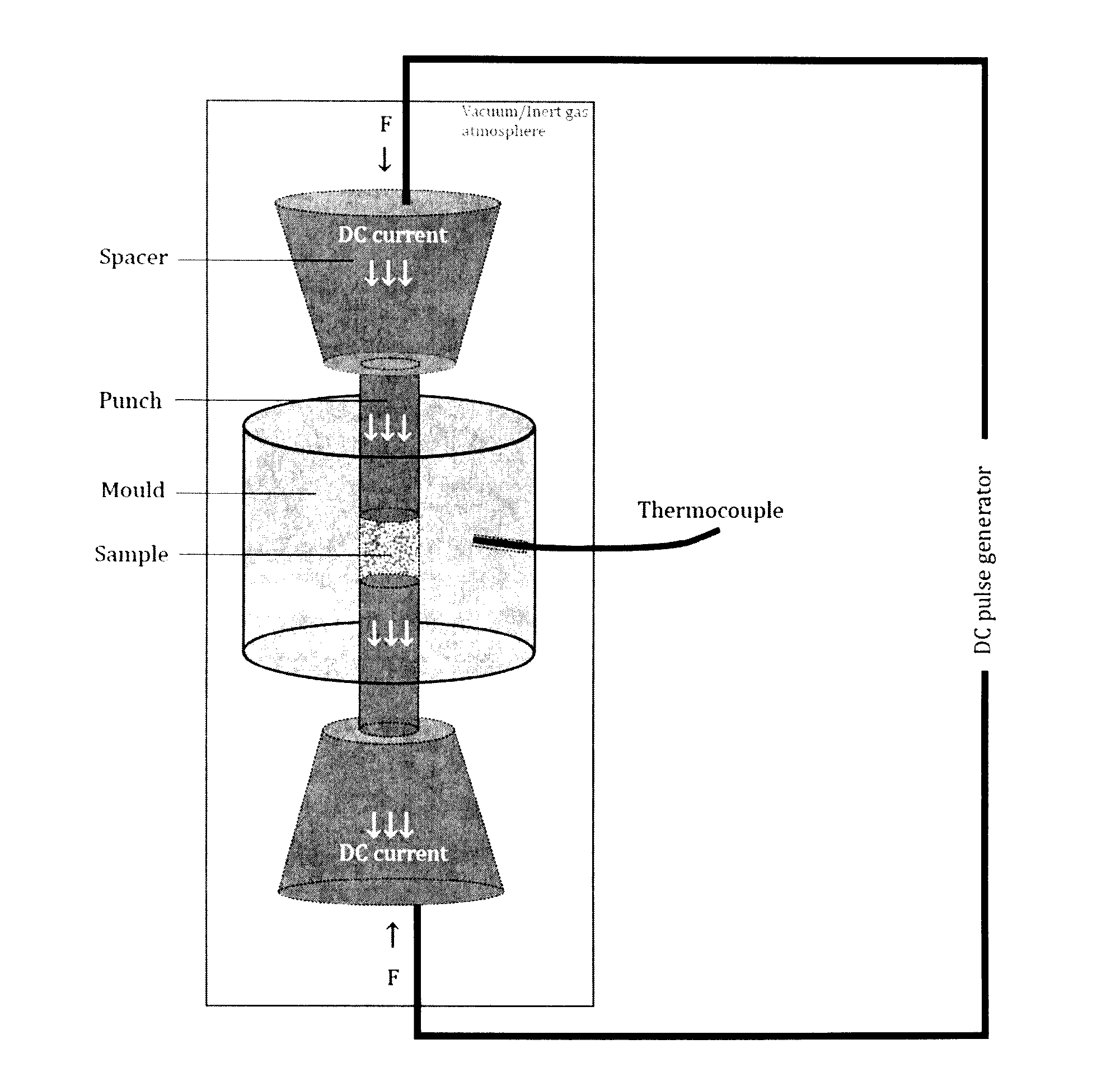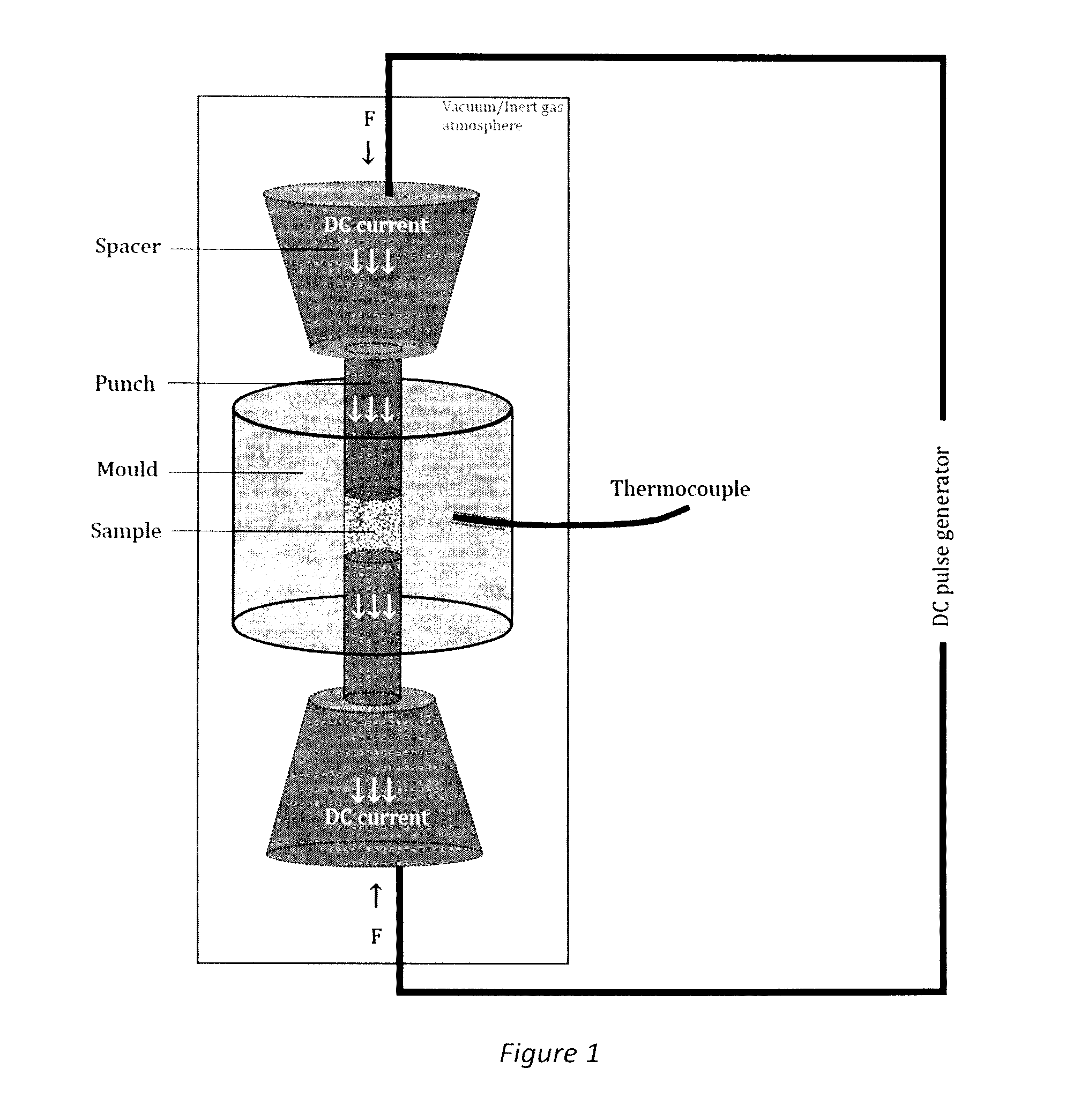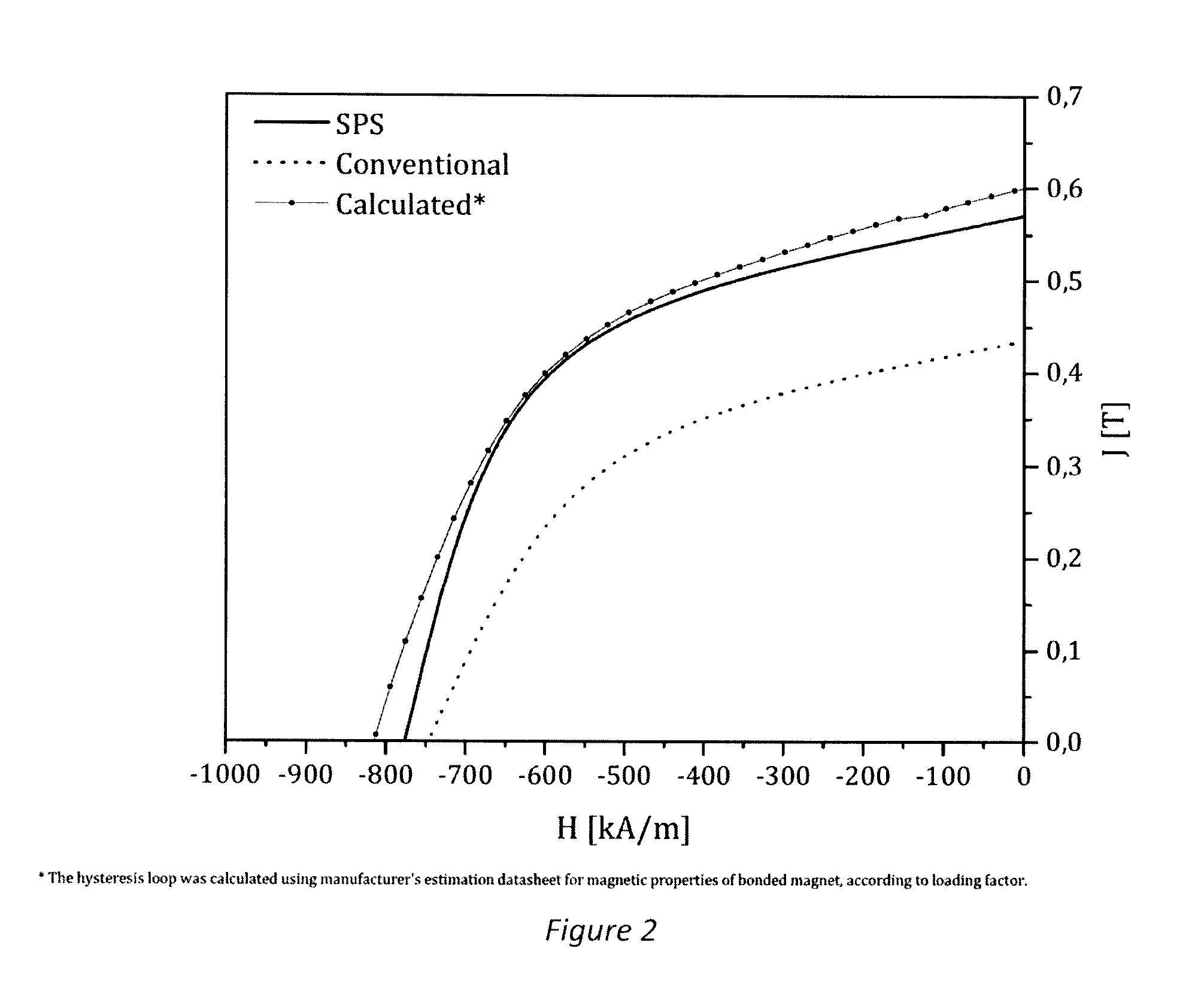METAL-BONDED RE-Fe-B MAGNETS
- Summary
- Abstract
- Description
- Claims
- Application Information
AI Technical Summary
Benefits of technology
Problems solved by technology
Method used
Image
Examples
Embodiment Construction
[0024]Object of the present invention is fabrication of metal-bonded magnets utilizing magnetically isotropic or anisotropic RE-Fe—B powder and LMP alloy as binding phase. More preferably, it consists of Nd—Fe—B powder blended with Zn powder as in the following example, with melting point of 420° C. Sintering temperature for these compacts is set at 400° C., pressure of 50-500 MPa is applied to assist the densification process. Consolidation time is kept to a minimum, around 5 minutes per cycle to preserve magnetic performance.
[0025]The example features a magnetic powder, made of crushed ribbons in the size range 60-325 μm and LMP particles added in the form of spheres in the size range 1 to 5 μm. The processing route includes mixing of the powders in different amounts and subjecting them to a hot-compaction cycle using a SPS machine. FIG. 1 shows a schematic of such a SPS machine, in which DC-pulses are applied to the powder mixture (sample) arranged in the mould. At the same time ...
PUM
| Property | Measurement | Unit |
|---|---|---|
| Temperature | aaaaa | aaaaa |
| Temperature | aaaaa | aaaaa |
| Fraction | aaaaa | aaaaa |
Abstract
Description
Claims
Application Information
 Login to View More
Login to View More - R&D
- Intellectual Property
- Life Sciences
- Materials
- Tech Scout
- Unparalleled Data Quality
- Higher Quality Content
- 60% Fewer Hallucinations
Browse by: Latest US Patents, China's latest patents, Technical Efficacy Thesaurus, Application Domain, Technology Topic, Popular Technical Reports.
© 2025 PatSnap. All rights reserved.Legal|Privacy policy|Modern Slavery Act Transparency Statement|Sitemap|About US| Contact US: help@patsnap.com



